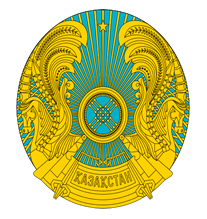Location
Ethnic Kazakhs, a mix of Turkic and Mongol nomadic tribes who migrated to the region by the 13th century, were rarely united as a single nation. The area was conquered by Russia in the 18th century, and Kazakhstan became a Soviet Republic in 1936. Soviet policies reduced the number of ethnic Kazakhs in the 1930s and enabled non-ethnic Kazakhs to outnumber natives. During the 1950s and 1960s agricultural "Virgin Lands" program, Soviet citizens were encouraged to help cultivate Kazakhstan's northern pastures. This influx of immigrants (mostly Russians, but also some other deported nationalities) further skewed the ethnic mixture. Non-Muslim ethnic minorities departed Kazakhstan in large numbers from the mid-1990s through the mid-2000s and a national program has repatriated about a million ethnic Kazakhs back to Kazakhstan. These trends have allowed Kazakhs to become the titular majority again. This dramatic demographic shift has also undermined the previous religious diversity and made the country more than 70% Muslim. Kazakhstan's economy is larger than those of all the other Central Asian states largely due to the country's vast natural resources. Current issues include: developing a cohesive national identity, expanding the development of the country's vast energy resources and exporting them to world markets, diversifying the economy, enhancing Kazakhstan's economic competitiveness, and strengthening relations with neighboring states and foreign powers.
Kazakhstan is a presidential republic.
Source: CIA World Factbook
Members:
Resources
Displaying 51 - 55 of 69Ministerial Decree No. 14 validating the Regulation on the Agency on land resources.
This Ministerial Decree sets up the authorized state institution Agency on land resources as licensing and supervision authority in the sphere of land resources. The main functions of the Agency shall be: (a) regulation of land relations, geodesy and cartography; (b) land survey; (c) land monitoring and keeping the state land cadastre; (d) land use planning and zoning; and (e) mapping.
Ministerial Decree No. 943 validating the Regulation on reservation of the plots of land for setting up and expansion of protected areas.
This Ministerial Decree regards reservation of the plots of land for setting up and expansion of the regional and local protected areas which shall be carried out in accordance with the program of the development of protected areas and ecological networks by decision of the regional and local executive powers. Territorial branches of authorized environmental institution shall draw up proposals and submit application to the local executive powers regarding reservation of the plots of land destined for protected areas.
Ministerial Decree No. 1164 amending Ministerial Decree No. 108 of 2000 regarding the validation of the Regulation on the modalities of concession of subsoil in lease.
In the Regulation on the modalities of concession of subsoil in lease in sub-issue 3 of the issue 30 the wording “and the mining inspection” shall be repealed.
Amends: Ministerial Decree No. 108 of 2000 regarding the validation of the Regulation on the modalities of concession of subsoil in lease. (2000-01-21)
Ministerial Decree No. 688 on land registration.
This Ministerial Decree shall be applicable to the plots of land legalized in accordance with the Law on property amnesty, located on the national territory the right of ownership and land use to which have not been registered in accordance with the national legislation.
Ministerial Decree No. 862 validating the Regulation on the state registration of protected areas.
This Ministerial Decree establishes the modalities of keeping the state register of protected areas. The state register shall contain the following data: (a) governmental decision on setting up protected area; (b) descriptor of protected area; (c) naturalistic and scientific substantiation of setting up and expansion of protected area; (d) positive conclusion of the state environmental audit; (e) land, water, forest resources and wildlife species; and (f) protected species and protected sites.


